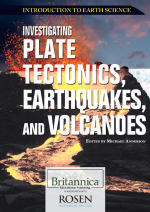Добрый день, Коллеги. Важное сообщение, просьба принять участие. Музей Ферсмана ищет помощь для реставрационных работ в помещении. Подробности по ссылке
Investigating plate tectonics, earthquakes and volcanoes / Исследования тектоники плит, землетрясений и вулканов
The tropical island of Java, Indonesia, has sweeping beaches, lush landscapes, and majestic mountains. But in late 2010 the eruption of Java’s Mount Merapi volcano made parts of the island an ugly nightmare. Huge gas clouds and fiery rocks spewed high into the air. Glowing lava snaked down the mountainside. Showers of ash draped homes and fields in ghostly gray. Later, search and rescue teams hunted for survivors but found mostly bodies, some charred, caught in mid-flight. In the end, hundreds of people were killed. This powerful eruption is just one illustration of why many Earth scientists focus on the study of plate tectonics.Plate tectonics is the modern theory of the movement of Earth’s outer shell, or lithosphere. The lithosphere consists of the planet’s rocky surface layer, called the crust, and the solid outermost layer of the mantle beneath. The lithosphere is broken into about a dozen large plates and several smaller ones. The plates float on a much hotter layer of partially molten rock called the asthenosphere, which is also part of the mantle. The asthenosphere slowly churns, driven to movement by radioactive heating of the planet’s core. This churning causes the plates of the lithosphere to move at a rate of about 2 to 4 inches (5 to 10 centimeters) a year.




